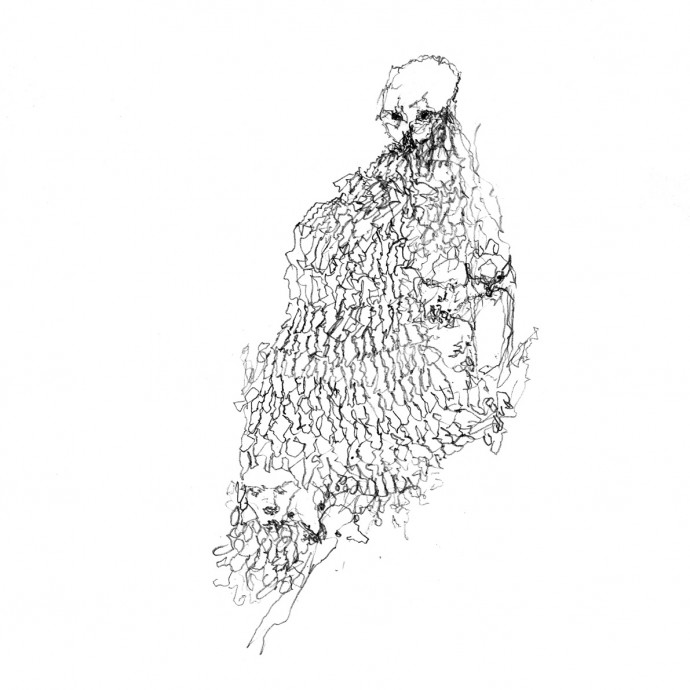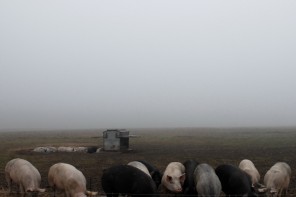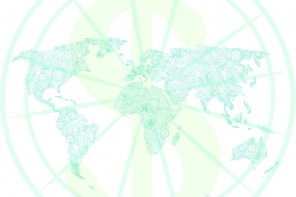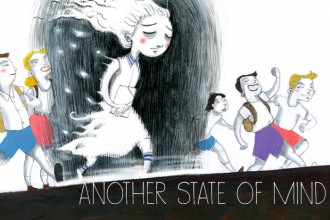What is creativity and where does it come from? There surely are as many answers to these lifelong questions as there are creative people on this planet. Put more existentially, what is it that makes human beings create? What kinds of challenges and meanings does the creative endeavor take?
In this article, the Berlin based Finnish visual Artist, Elsa Salonen, gives us her personal account to these questions, poetically describing her urge to create as a spiritual quest starting from a childhood apple tree, ever continuing and taking new shapes in her art.
Elsa recollects how she already at a very young age wondered about the meaning of life. She would climb up to an apple tree in their family garden, pick a calm and comfortable spot and reflect upon questions of life and death. Back then she came to the conclusion that reincarnation was the only reasonable explanation for what happens after death. Ever since her childhood years, these topics have been present in her thoughts as well as in her art – and in fact, she explains that art for her is a channel to reflect on such existential topics and to scrutinize the world around her.
Elsa explains that her interest in visual arts was intertwined with her existential questioning and started already at a young age:
“My mother passed on her handicraft skills to us children and introduced me to the world of self-expression. She isn’t an artist by profession but her enthusiasm in doing things by hand created a certain atmosphere in our family home. She is very skilled in working with her hands and I learned different techniques at home as well as in an art course I was taking once a week. I remember being extremely inspired by the work of famous artists such as Gustav Klimt, and thinking that it was the best a person can ever accomplish!”
When school was over Elsa proceeded to study art in Italy. Her early works from that time were inspired by social topics such as the rights of disabled people. In line with her adolescent existentialism and interest in the core mysteries of life, also the concept of time was a theme in her early art. Elsa’s later art is thematically marked by spirituality and nature, and has a somewhat nostalgic feeling to it. Elsa herself puts it this way: “I started experiencing strong visions that popped up from my unconsciousness; I would get these visions or images right before going to sleep or while listening to music. Later I realized that these were the visual counterparts to the themes I had been scrutinizing, which I then later transformed into paintings.” Here Elsa explains us, how she became aware of her unconsciousness and the thoughts and ideas that mark her creative quest as an artist. These strong visions enabled her to finally tackle the topics of spirituality and meaning that had always been present in her life and a part of her identity.
Personally Elsa finds the 2012 installation “I Walk in the Forest as in a Temple”, one of her most successful works. Inspired by one of her visions, this art work is a mandala-type ornament made with pigment powder on the floor of a gallery space in Berlin, embellished with a compilation of animal bones, bronze bowls and lichen. Elsa explains the context of her installation as stemming from Finnish folk tradition:
“The old Finnish folk religion knew the forest as a sacred place that taught immense value for nature and the sense of being one with it. Even today, many Finns feel a sense of togetherness with the forest. In our folk beliefs nature acts as a tool of communication with spirits and ancestors. Every family used to have their own sacred tree, and each community a shrine dedicated to various offerings for keeping the ‘universal balance’. A bear skull rests in the middle of the installation; the most important of our sacred feasts, Karhunpeijaiset, was held in honor of a hunted bear. In this celebration, the spirit of the captured animal is returned back to the forest to ensure future prey.”
Elsa says that in the early version of this work the bones and lichen were missing, however, when she started to work on the piece, the elements in a way forced themselves into it, becoming an eminent part of the final outcome. The art work combines elements from eastern philosophy and Finnish folk tradition and beliefs which are tools for Elsa’s spiritual and creative endeavor.
Through studying Finnish traditions and belief system together with intergenerational and social memory Elsa is trying to shape her own explicit worldview. As part of the process meditation has enabled her to see things more clearly from her own unique point of view which avoids any direct quotes of ideologies or other discursive frameworks. She has created a more direct approach to her topics which has led her to slowly abandon the traditional method of painting, which according to her, always ends up ‘representing’ things, feelings etc.
This is how Elsa explains her current creative method: “at the moment burned charcoal-like materials, bright colors of mineral stones, dried pieces of vegetation from nature and the like attract me. I believe that these colors and materials ‘speak to me’ in a way that enables me to inspect my current themes more in depth. For example, one of my newest works shows bleached white flowers together with colorful alum crystals that I grew in dye extracted from the flowers.”
It might seem a clear choice and a way of life for her, but Elsa also struggled with the secondary or even trivial nature of her line of work. She explains that sometimes the realization that art is far away from solving life’s problems and from actual, practical helping of the ones in need, has caused her countless moments of doubt along the way. However, the urge to create and express have been clear and strong enough to keep her doing what she has been doing all her life.
Elsa has come to the conclusion that through her work she does her best to contribute to the mentality she knows the best, the European one. She concludes: “I believe that in the course of past decades, we, the people in the west have put so much effort into creating material wealth that we have forgotten or neglected the spiritual and mental well-being. Most of us have what we need, materially speaking, but there are many essential values on the brink of oblivion and I feel that one of the most important purposes for my art is to keep bringing these topics into discussion and reminding us of the values and traditions almost forgotten.”
To learn more about Elsa and her work visit elsasalonen.com







